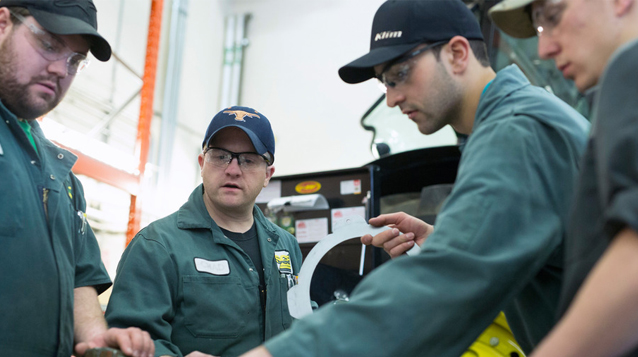
By Dr. Larry Rosia, president and CEO
I’m going to introduce a phrase that many of you likely never heard before today: Intelligent Agriculture. #Agriculture #SmartAg #BigData #Agri-Food
Intelligent agriculture, or smart agriculture, is so new that you won’t find it in the dictionary. It is a term just starting to be adopted by the most innovative companies in the agriculture and agri-food industries. Yet it is one that holds great promise not only for Saskatchewan Polytechnic, and also for the Saskatchewan and yes, Canada.
What does it mean?
Intelligent Agriculture is designed to integrate data with new technologies. The end result is to drive global food production.
In a nutshell, Intelligent Agriculture encompasses two things. First, the technologies needed for practical and efficient application of data in ag production, and second, how the data collected is used in a practical way.
Like almost every other industry, agriculture is experiencing massive transformation. It is a transformation that is driven by advancements in computer hardware and software, including Internet-based technology and Artificial Intelligence. However, the sheer amount of data collected and produced by drones, satellite, microwaves, soil sampling and other technologies creates a massive challenge for the ag industry. Having all this data has not correlated to extra value for producers. In fact, the gap between data collection and data analysis, or action, continues to grow even as new technologies are introduced.
Put another way, collecting and possessing data is one thing. Turning it into actionable insights that lead to economic value and higher profit margins for growers is another.
Imagine owning a combine or a tractor but not understanding how to properly use either.
Today Sask Polytech is taking the first step on a journey.
This afternoon I joined Dr. H.J. Thompson, President of Olds College, in signing a Memorandum of Understanding (MOU) to explore the demand for new collaborative programming and applied research into the emerging area of Intelligent Agriculture.
This will be a journey of exploration for both institutions. The topics we’ll explore will include:
- Big Data collection and storage in agriculture,
- Big Data analytics,
- How the Internet of Things could impact agriculture,
- Machine learning in agriculture,
- The creation of Big-Data AgTech outcomes such as apps, processes, etc., and
- Potential career opportunities for graduates at both institutions.
I’m sure there will be others.
Over the past few years, Sask Polytech has broken new ground with a range of applied research projects and through partnerships with various industries. The work undertaken by our faculty and students, with support from the Office of Applied Research and Innovation, is one of many features that make us a first-choice polytechnic in Canada.
Agriculture contributes billions of dollars each year to Saskatchewan’s GDP. It is critically important to this province. While Sask Polytech directly supports the agricultural industry in Saskatchewan through many of its trades and business programs, there are few direct current linkages to frontline agriculture programming.
Currently the most closely direct linkages are:
- Agricultural Mechanics (Apprenticeship),
- Pesticide Applicator Certificate (ConEd), and
- Grain Marketing Classes (ConEd).
Sask Polytech has many supporting programs that indirectly support the ag industry in Saskatchewan. The opportunity exists to put our institution, with our technical expertise, and this province at the forefront by informing students about, and training them for the emerging needs of the ag industry. The work that will stem from this MOU will give us a clearer understanding of how to meet those needs.
That is why the MOU Dr. Thompson and I have signed is important. It represents an opportunity—in both applied research, as well as in both institutions’ abilities to meet students’ and industry’s needs.
Obviously, there are many questions. That’s understandable. I plan to share regular updates on our progress, and would be pleased to connect with you on LinkedIn.
We are taking the first steps on an exciting journey for answers. I look forward to learning with you.
Published August 2017.

